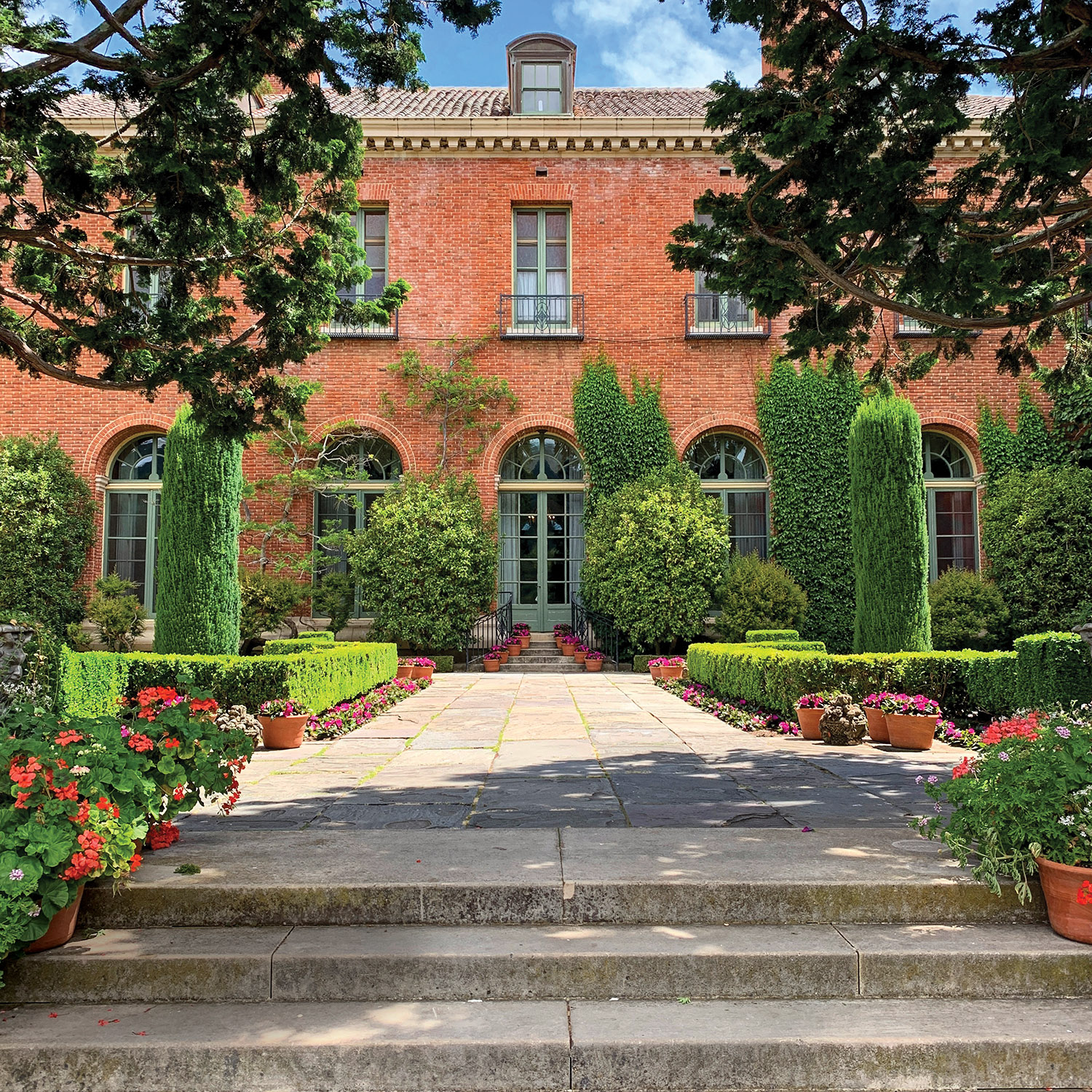
Located 20 miles south of San Francisco, the handsome, 56-room Georgian Revival house at the heart of the 654-acre Filoli estate was designed by Willis Polk and completed in 1917.
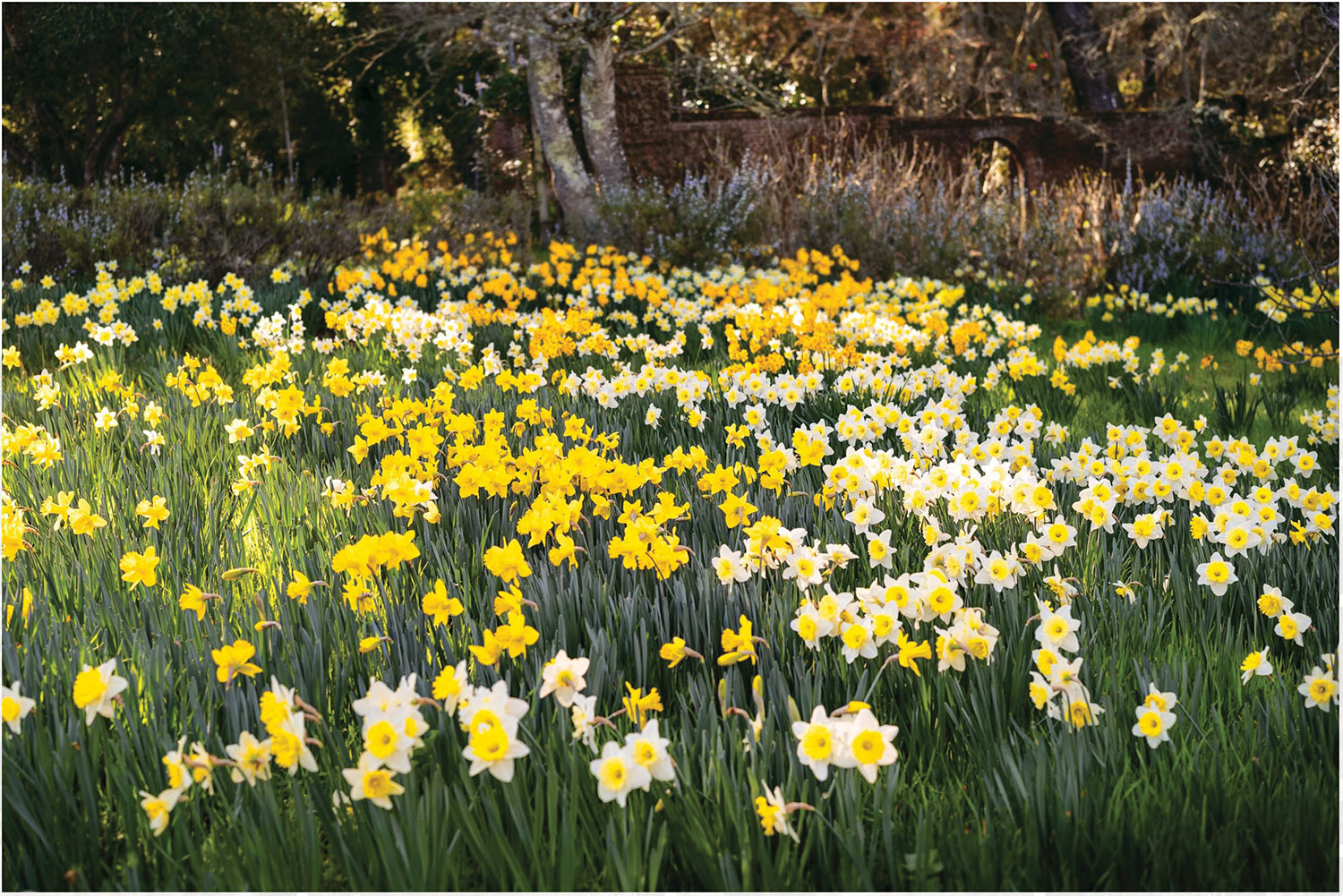
Photo courtesy of Filoli Historic House & Garden
According to the American Daffodil Society’s historic daffodil list, Filoli preserves 37 cultivars.
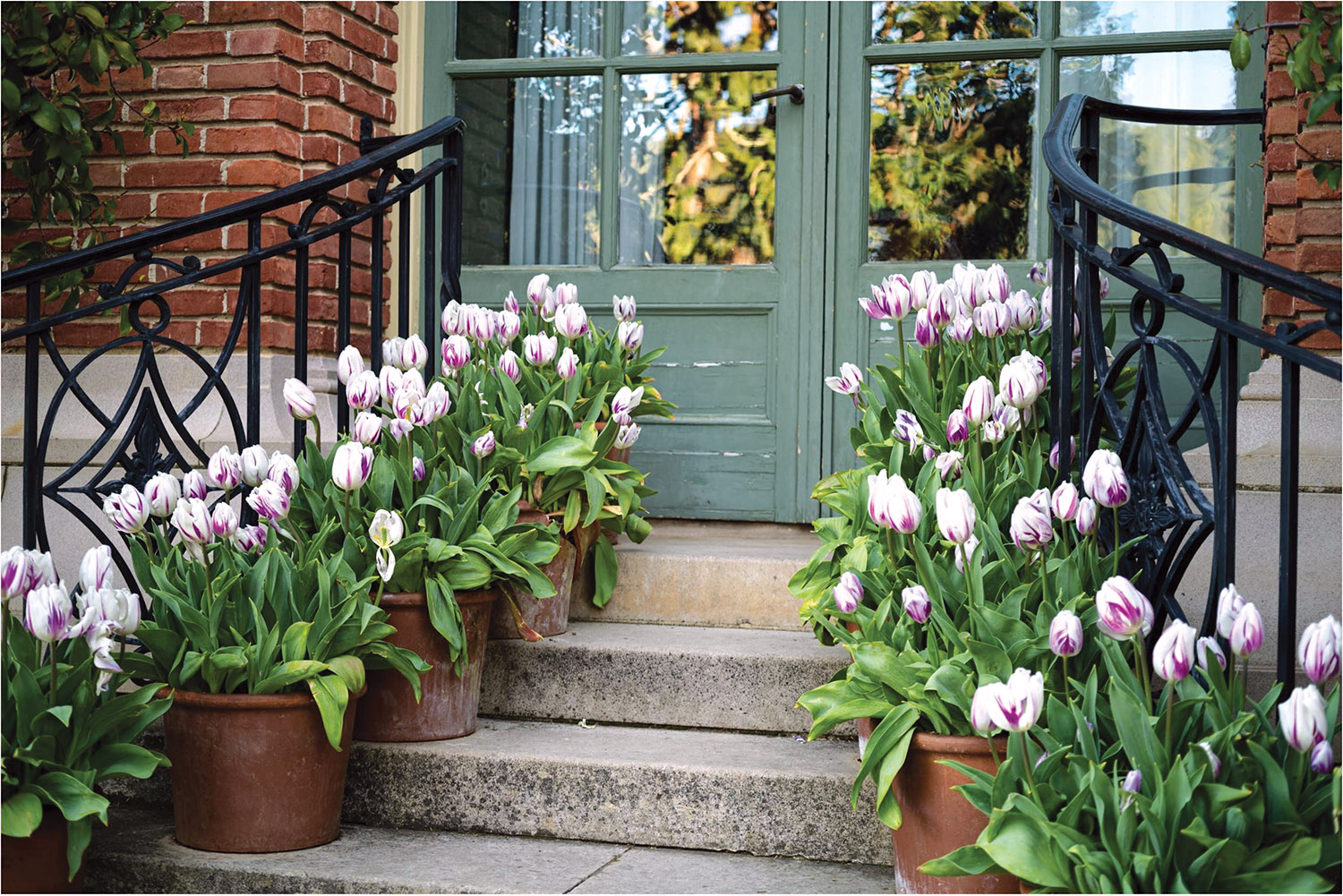
It take 14 horticulturists to look after the grounds of Filoli, which includes hundreds of containers for seasonal displays.
“Gardens in particular have surged in popularity lately,” says Filoli CEO Kara Newport. “The pandemic really solidified the importance of gardens as cultural centers. They’re universally relatable.” After all, the inscription on a sundial at Filoli reads, “Time began in a garden.” And ever since that beginning, it’s the stories behind gardens—and the houses that often go with them—that give them life.
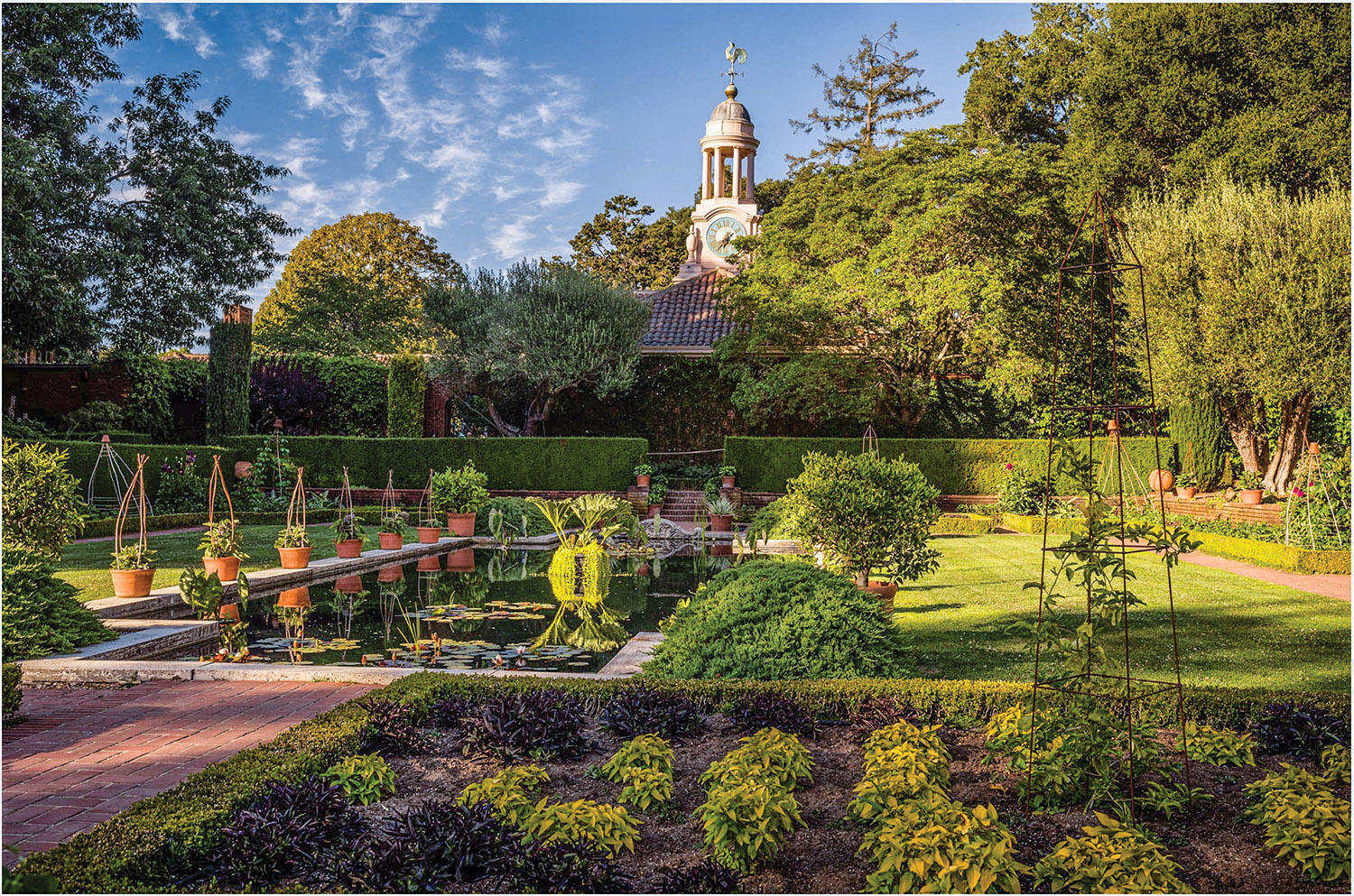
The sunken garden is the centerpiece of the garden “rooms” and features the largest, most dramatic flowerbeds. The charming clock tower tops the gift shop, originally the garage.
Filoli’s stories originated centuries ago with the indigenous migratory Ramaytush Ohlone peoples who occupied the land, followed by Spanish settlers, Mexican rancheros, and then North Americans. Entrepreneur, socialite, gold mining magnate, and utilities tycoon William B. Bourn II and his wife, Agnes, built the house at Filoli as a country retreat in 1917, naming the place as an abbreviation of his credo by using the first two letters of the first word in each sentence: “Fight for a just cause. Love your fellow man. Live a good life.” From the fortune they amassed to the estate they stewarded, the couple seemed to live out this doctrine to the extreme, as evidenced in gatherings such as the “Drunks Dinner” they hosted in 1933 celebrating the end of Prohibition.
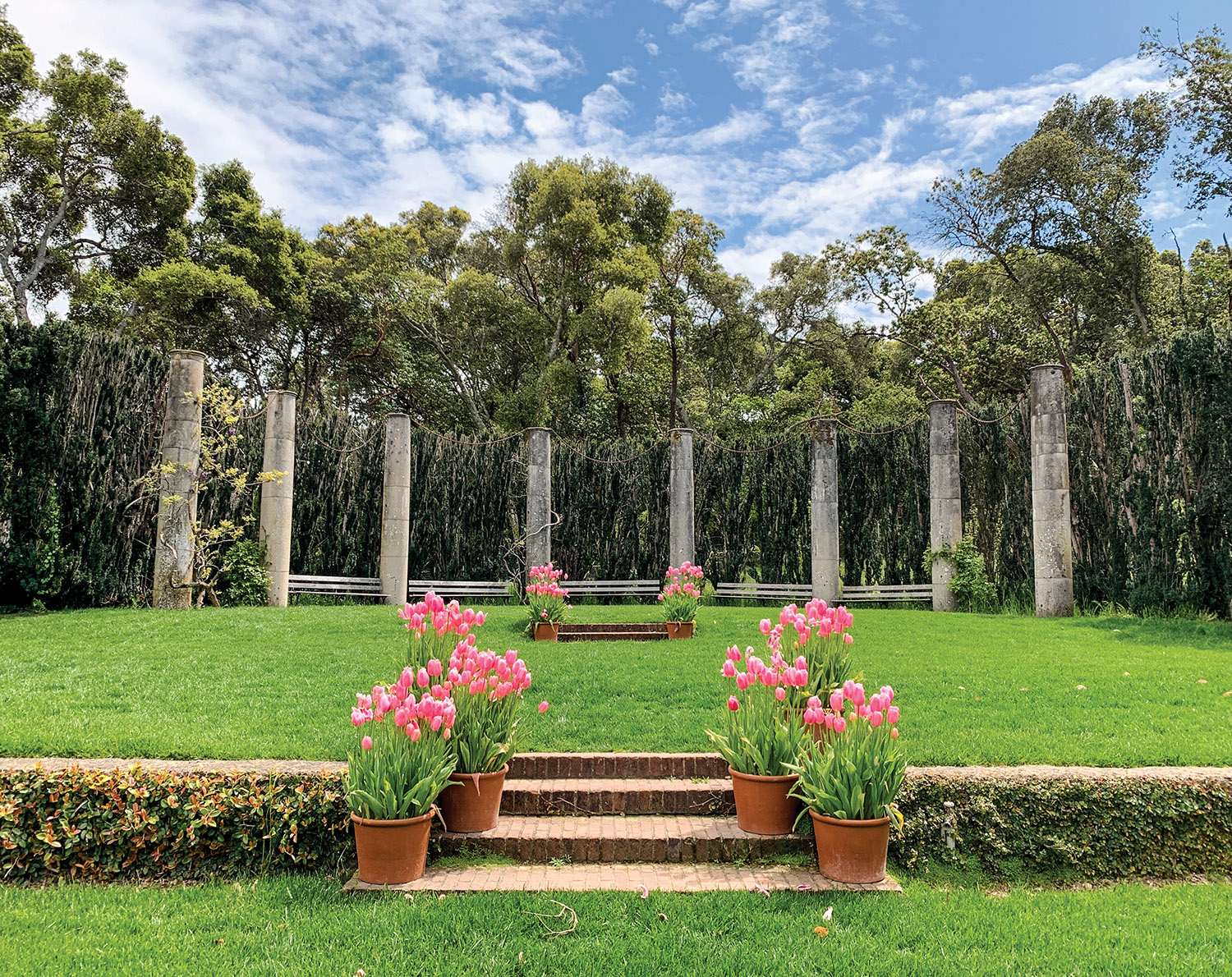
A grassy expanse framed by a colonnade recalls an Italian Renaissance garden and is sometimes used as a performance space.
In 1937, a year after both Bourns died, Bill and Lurline Roth acquired Filoli and continued the Bourn legacy. Lurline, like her predecessor, Agnes, was an avid gardener and worked to expand the elaborate Bruce Porter- and Bella Worn-designed gardens. Bill’s business successes mounted, the estate thrived, and the revelry continued to roar with extravagant fetes decorated by the incomparable late Tony Duquette. Tony’s protégé and business partner Hutton Wilkinson remembers a blue-and-white party with giant pagodas and suits of armor painted to look like blue-and-white porcelain; a mise-en-scène with tableaux that looked like Flemish paintings created from acres of sunflowers planted at Filoli just for the occasion; and a pink-and-white ball with puffy white clouds floating across an enormous tent done in swaths of Jim Thompson silk woven by Thompson himself. “How can you describe the indescribable? It’s almost impossible,” says Hutton. He doesn’t even mention the giant replica of a three-masted, flower-bedecked schooner that once sailed across the lily pond or the 10-foot-tall arrangements that often graced the reception room.

The gateway to the upper gardens bears the Filoli crest, with each symbol separated to emphasize William Bourn’s motto: “Fight for a just cause. Love your fellow man. Live a good life.”
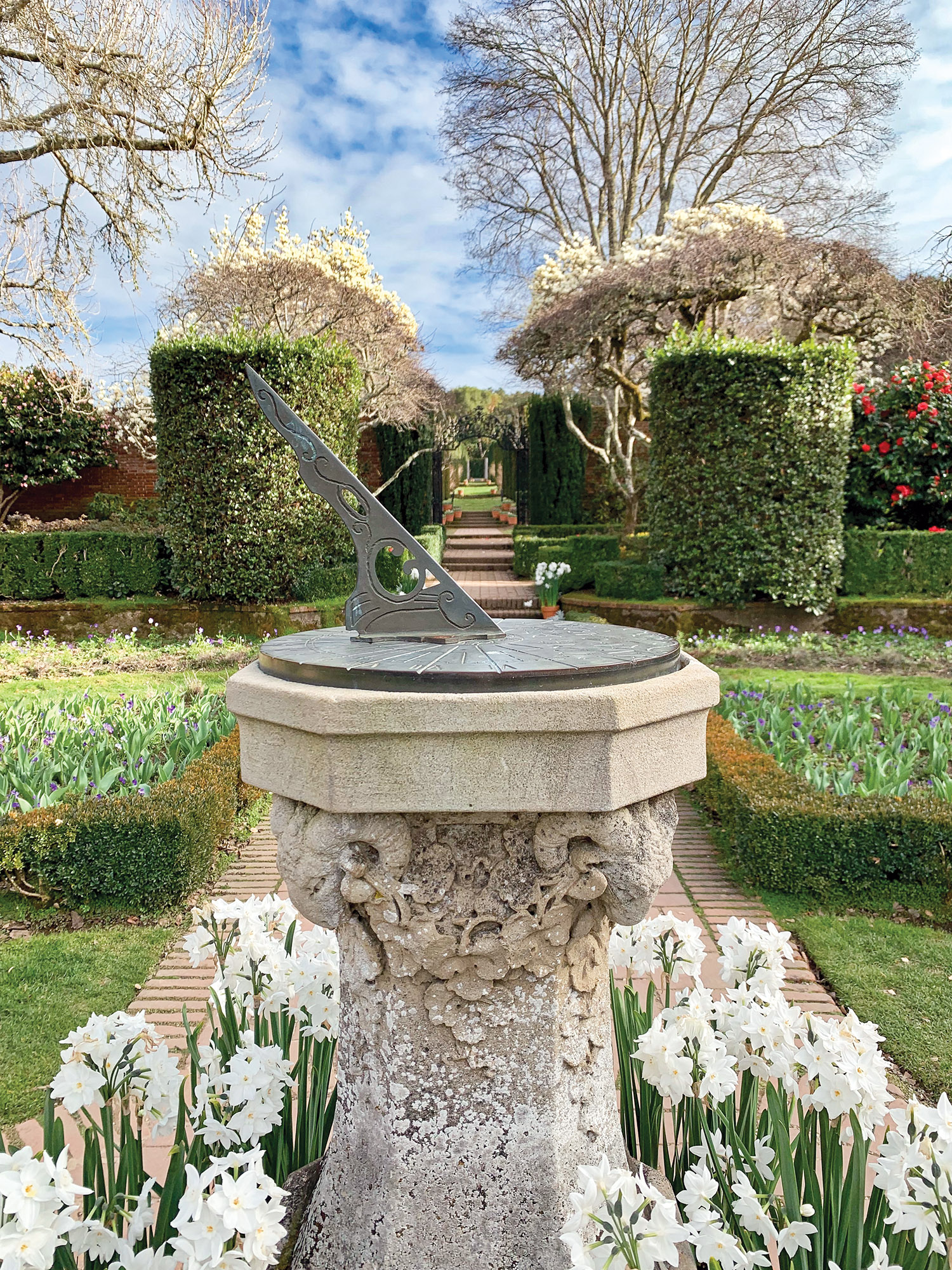
The sundial’s inscription fittingly reads, “Time began in a garden.”
Although such stories of extravagance do not serve Filoli’s current aspired-to narrative of inclusivity, they are part of its history. Filoli, and others like it, must tread a delicate balance between yesteryear and modern day. The idea is to create a Filoli for today that is an elegant platform from which to present a broad sampling of human experience that influenced not only a single estate, but also a broader scope of culture and society. “That is our intention,” says Kara. “The various spaces in the house and gardens emit different stories.” For example, a plaque in the reception room tells of a Japanese butler who returned to service at Filoli upon his release from the internment camp where he was held during World War II. And there are many others—Chinese cooks, Polish maids, Italian gardeners—all with stories to share of their time at Filoli. Rooms now include “soundscapes” that re-create conversations that might have occurred.
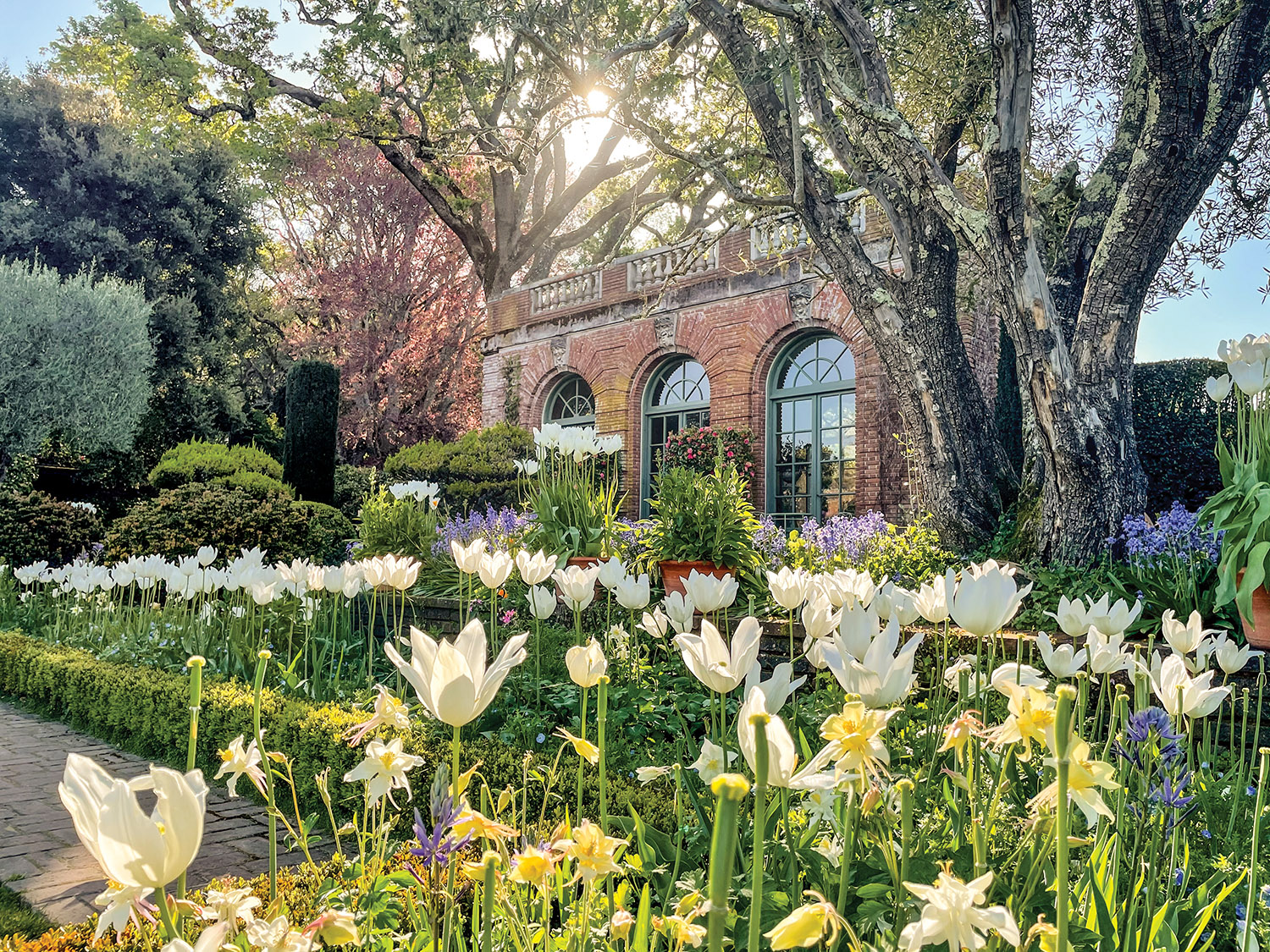
The garden house was designed by Arthur Brown, Jr., and constructed in 1920.
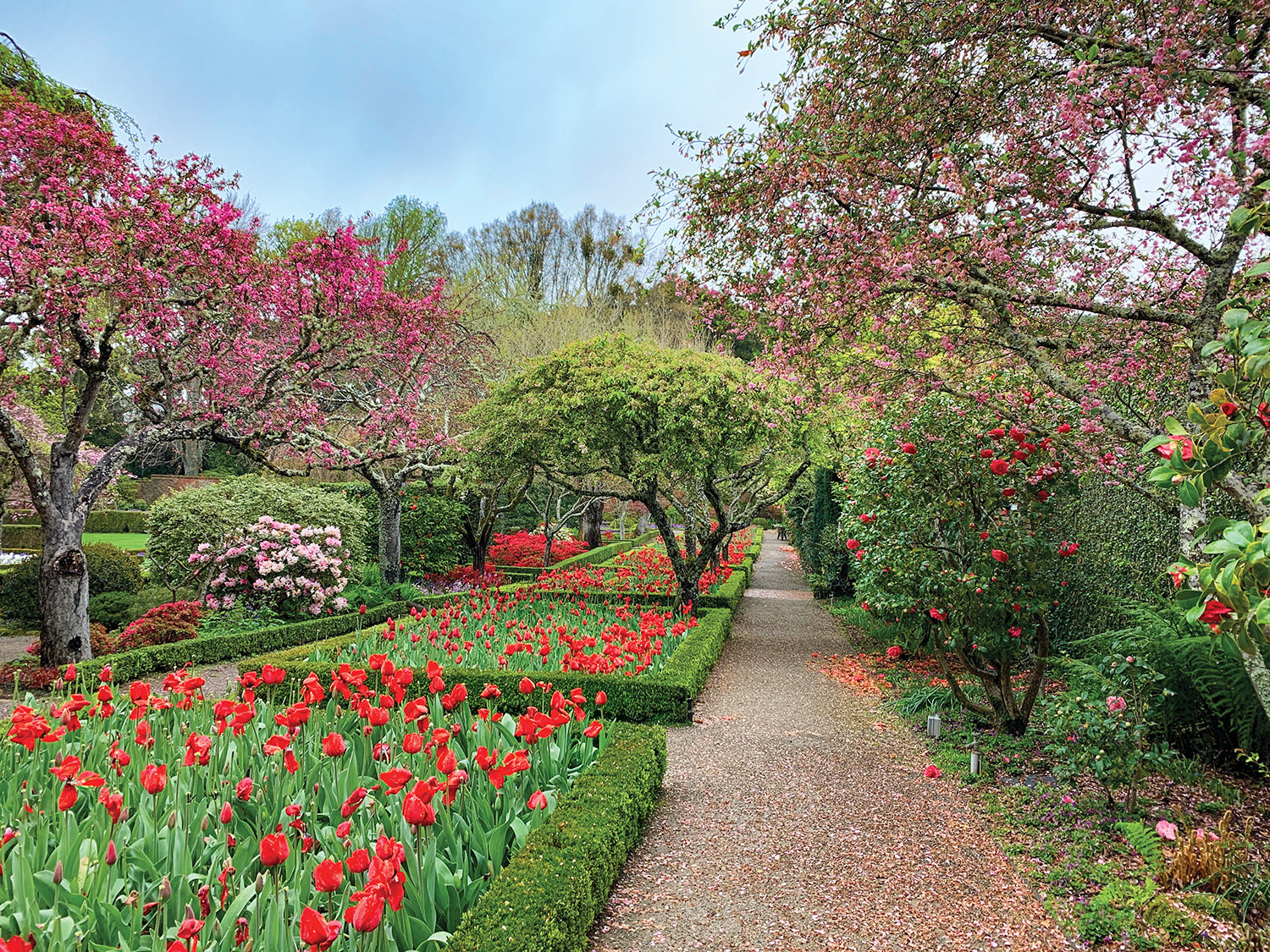
Filoli’s formal gardens, originally designed by Bruce Porter and Bella Worn, have evolved over the years to adapt to today’s sense and sensibilities.
Perhaps the democratization of grandeur need not make Filoli less grand but rather more interesting, capturing as it would a broad sampling of human experience that influenced not only the estate, but also a broader scope of society. After all, houses and gardens are history perpetually in the making.
THE GLORY OF THE GARDENS
The 16 acres of formal gardens are Filoli’s main attraction, highlighted by a sunken garden and reflecting pool, a Chartres Garden inspired by the Tree of Jesse window at the 12th-century Chartres Cathedral in France, and a 1-acre walled garden subdivided into numerous ornamental garden rooms. There are terraces, woodlands, hayfields, orchards, cutting gardens, panel gardens, and greenhouses as well. “We are in the perfect microclimate to grow a lot of things that are familiar to people from the East Coast, as well as other parts of the world,” says director of horticulture Jim Salyards. “We have something blooming 365 days a year, including an incredible camellia collection.” Camellias were fashionable in the 1930s and 40s around the time the Roths bought Filoli, and Lurline Roth was a devotee. Today there are nearly 300 shrubs and over 150 varieties. The camellias are in good company with a million daffodils. (Yes, you read that number right.) Close to 2,000 containers hold tulips, foxgloves, pansies, and other spring bulbs.
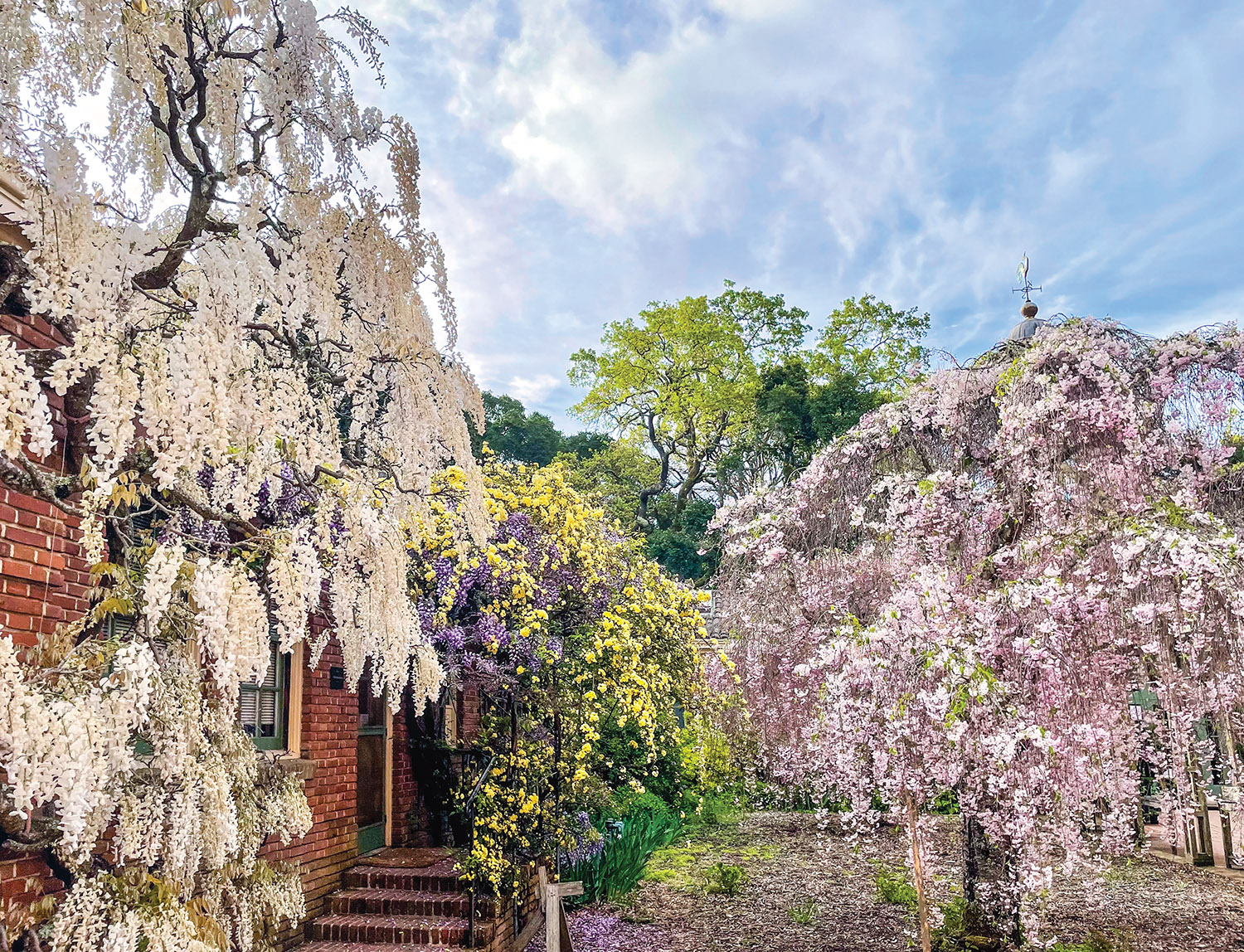
Photo by Dani Hielscher, courtesy of Filoli Historic House & Garden
Multiple varieties of wisteria drape and bow along walls and walkways.
By Frances Schultz
Photography courtesy of Filoli Historic House & Garden

This story appears in Flower magazine’s March/April 2022 issue. Subscribe, find a store near you, or sign up for our free e-newsletter.



